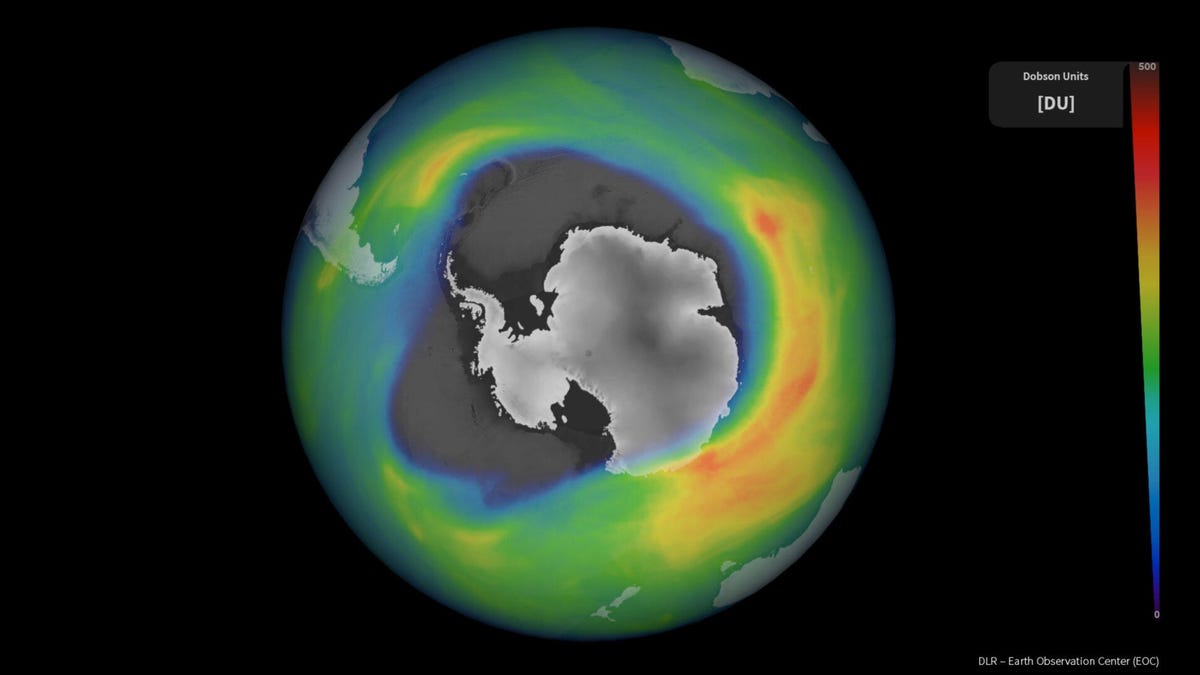2020 Antarctic ozone hole 'one of the largest and deepest in recent years'
The hole in the ozone layer keeps coming back to haunt us.
The ozone layer is necessary to helping life survive on Earth. It acts like atmospheric sunscreen, which is why scientists keep a close eye on an ozone hole that appears seasonally over Antarctica.
This year's hole "is one of the largest and deepest in recent years," the European Space Agency (ESA) said in a statement this week. The ozone layer protects the inhabitants of Earth from ultraviolet radiation from the sun.
The size of the hole fluctuates and reaches its maximum size sometime in September or October every year. The Copernicus Sentinel-5P satellite is tasked with watching the ozone hole. The German Aerospace Center crunched the data and determined the hole has hits its peak for 2020 and ozone levels are set to recover by the end of the year.
The 2020 hole reached a size of about 9.6 million square miles (25 million square kilometers) in early October. ESA said this size was comparable with the holes that formed in 2015 and 2018.
An image released with the statement shows the hole extending across most of Antarctica and a video lets you track the changes from late September through the middle of October.
Last year's hole was remarkably small, but that didn't mean it was healed. "The variability of the size of the ozone hole is largely determined by the strength of a strong wind band that flows around the Antarctic area," ESA said.
In 2019, NASA scientist Paul Newman was careful to note that the small hole was not a sign of a fast track to recovery.
Scientists sounded the alarm on the South Pole ozone hole in the '80s and kicked off a global effort to reduce the use of substances, like certain aerosol products, that damage the ozone layer. In 2018, NASA shared the first direct proof of ozone hole recovery due to a ban on harmful chemicals.
Researchers are hopeful the hole will eventually heal and are currently eyeing somewhere around 2050 for the ozone layer to return to normal.


